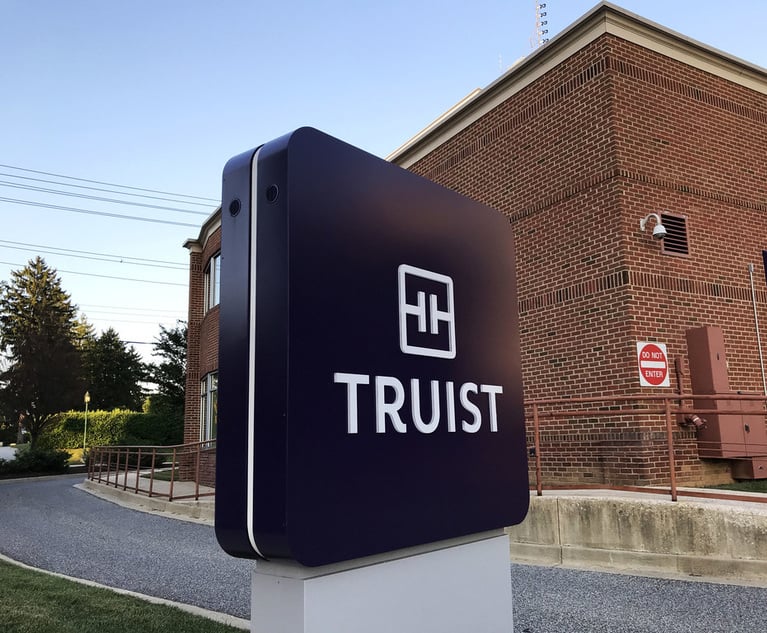Theft of Trade Secrets by Cyberattack: Mitigating the Damage
To mitigate damage and try to preserve the protected status of trade secrets affected by a cyberattack, businesses must act fast.
July 10, 2017 at 01:13 PM
5 minute read
Cyberattacks are an unfortunate reality of today's business environment. Theft by hacking of confidential consumer information and the legal fallout has been well-reported—some of the higher-profile victims include Target, Home Depot and the notorious Ashley Madison website. In addition to consumer information, a company's trade secrets invariably get caught up in the cyberbandits' web. As a result, businesses should be just as concerned about the compromise of these important business assets by way of cyberattacks.
The key to effectively addressing computer-based theft of confidential trade secrets actually begins prior to the hacking. Almost all businesses have trade secrets, which include things like customer lists and information, formulas and unique business processes. To obtain the legal protections afforded to trade secrets by federal and state law, however, a company must be able to show that the information is in fact confidential and that the business has taken reasonable measures to maintain that secrecy.
The first step to protecting trade secrets is to identify exactly what your trade secrets are. Too many companies take the approach that their trade secrets consist of “everything” or “the way we do business,” without being able to articulate exactly what is unique or proprietary about the information. Companies should conduct a trade secret audit every year seeking input from key management and IT personnel, as well as legal counsel. Once the trade secrets are identified, they should be logged, and the list should be reviewed and updated every year. Only when something is quantified can adequate steps be taken to protect it.
This content has been archived. It is available through our partners, LexisNexis® and Bloomberg Law.
To view this content, please continue to their sites.
Not a Lexis Subscriber?
Subscribe Now
Not a Bloomberg Law Subscriber?
Subscribe Now
NOT FOR REPRINT
© 2025 ALM Global, LLC, All Rights Reserved. Request academic re-use from www.copyright.com. All other uses, submit a request to [email protected]. For more information visit Asset & Logo Licensing.
You Might Like
View All
Second Circuit Ruling Expands VPPA Scope: What Organizations Need to Know
6 minute read
Expert: Georgia Tech Faces Uphill Battle in Suit Over Cybersecurity Failures

Delta Facing Class Action Lawsuit Over Tech Outage; Customers Seeking Refunds
3 minute read
Milberg Files Data Breach Suits Against North Carolina-Based Truist Bank
Trending Stories
Who Got The Work
Michael G. Bongiorno, Andrew Scott Dulberg and Elizabeth E. Driscoll from Wilmer Cutler Pickering Hale and Dorr have stepped in to represent Symbotic Inc., an A.I.-enabled technology platform that focuses on increasing supply chain efficiency, and other defendants in a pending shareholder derivative lawsuit. The case, filed Oct. 2 in Massachusetts District Court by the Brown Law Firm on behalf of Stephen Austen, accuses certain officers and directors of misleading investors in regard to Symbotic's potential for margin growth by failing to disclose that the company was not equipped to timely deploy its systems or manage expenses through project delays. The case, assigned to U.S. District Judge Nathaniel M. Gorton, is 1:24-cv-12522, Austen v. Cohen et al.
Who Got The Work
Edmund Polubinski and Marie Killmond of Davis Polk & Wardwell have entered appearances for data platform software development company MongoDB and other defendants in a pending shareholder derivative lawsuit. The action, filed Oct. 7 in New York Southern District Court by the Brown Law Firm, accuses the company's directors and/or officers of falsely expressing confidence in the company’s restructuring of its sales incentive plan and downplaying the severity of decreases in its upfront commitments. The case is 1:24-cv-07594, Roy v. Ittycheria et al.
Who Got The Work
Amy O. Bruchs and Kurt F. Ellison of Michael Best & Friedrich have entered appearances for Epic Systems Corp. in a pending employment discrimination lawsuit. The suit was filed Sept. 7 in Wisconsin Western District Court by Levine Eisberner LLC and Siri & Glimstad on behalf of a project manager who claims that he was wrongfully terminated after applying for a religious exemption to the defendant's COVID-19 vaccine mandate. The case, assigned to U.S. Magistrate Judge Anita Marie Boor, is 3:24-cv-00630, Secker, Nathan v. Epic Systems Corporation.
Who Got The Work
David X. Sullivan, Thomas J. Finn and Gregory A. Hall from McCarter & English have entered appearances for Sunrun Installation Services in a pending civil rights lawsuit. The complaint was filed Sept. 4 in Connecticut District Court by attorney Robert M. Berke on behalf of former employee George Edward Steins, who was arrested and charged with employing an unregistered home improvement salesperson. The complaint alleges that had Sunrun informed the Connecticut Department of Consumer Protection that the plaintiff's employment had ended in 2017 and that he no longer held Sunrun's home improvement contractor license, he would not have been hit with charges, which were dismissed in May 2024. The case, assigned to U.S. District Judge Jeffrey A. Meyer, is 3:24-cv-01423, Steins v. Sunrun, Inc. et al.
Who Got The Work
Greenberg Traurig shareholder Joshua L. Raskin has entered an appearance for boohoo.com UK Ltd. in a pending patent infringement lawsuit. The suit, filed Sept. 3 in Texas Eastern District Court by Rozier Hardt McDonough on behalf of Alto Dynamics, asserts five patents related to an online shopping platform. The case, assigned to U.S. District Judge Rodney Gilstrap, is 2:24-cv-00719, Alto Dynamics, LLC v. boohoo.com UK Limited.
Featured Firms
Law Offices of Gary Martin Hays & Associates, P.C.
(470) 294-1674
Law Offices of Mark E. Salomone
(857) 444-6468
Smith & Hassler
(713) 739-1250






